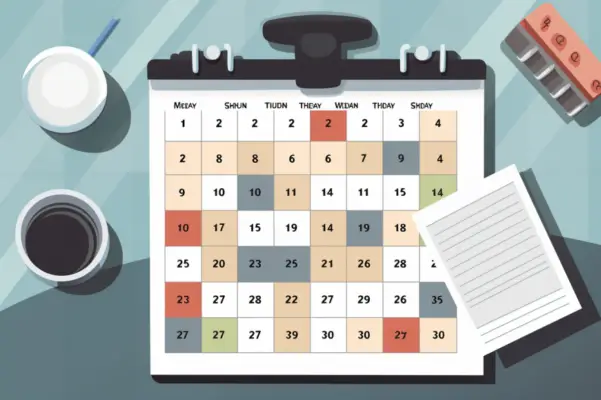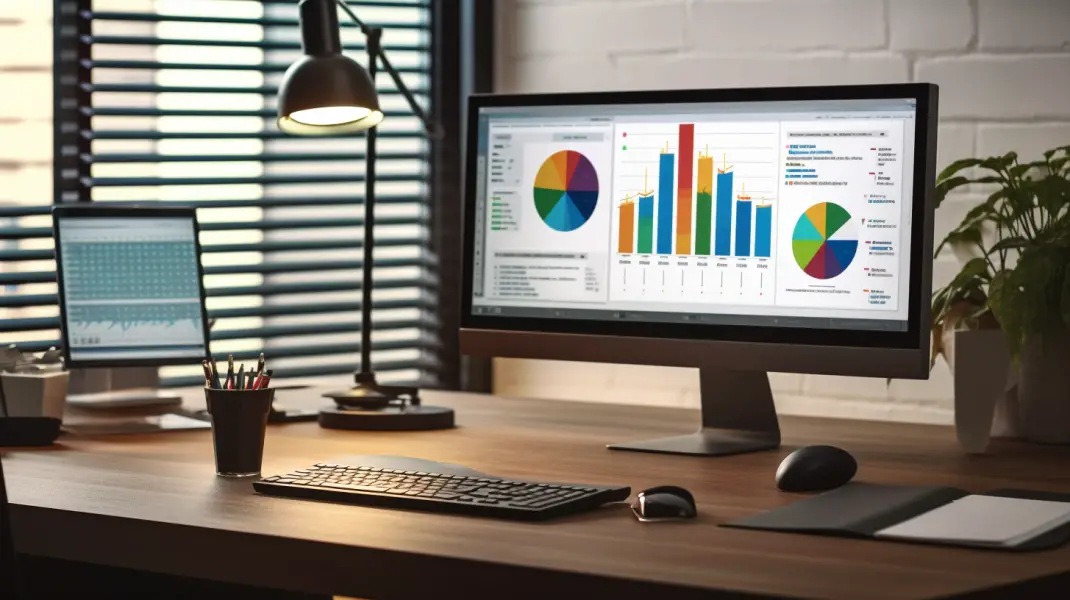Risk assessment dashboards are powerful tools that provide valuable insights into potential risks and help inform decision-making processes. These dashboards are designed to present complex data sets clearly and concisely, allowing users to assess the risk associated with various factors quickly.
Understanding how to read a risk assessment dashboard effectively is essential for finance, healthcare, and project management professionals.
In this article, we will explore the key components of a risk assessment dashboard and discuss strategies for interpreting the information presented. By adhering to an academic style of writing that is objective and impersonal, we aim to provide readers with a comprehensive understanding of how these dashboards work and how they can be used to make informed decisions.
This article will be valuable in navigating the complexities of reading a risk assessment dashboard.

Advanced risk assessment dashboard
The “Risk Dashboard” is integral to any robust risk management process. As we navigate a continually changing risk landscape, chief risk officers find immense value in the COVID-19 risk assessment dashboard, allowing for agile decisions based on real-time data.
It evaluates Risk Severity through a simple business impact model, illuminating actual impacts and potential breach impacts. This dashboard offers a complete risk profile encompassing various risk themes and visually representing acceptable risks.
The risk function in this dashboard utilizes the cyber risk assessment results and employs controls for risks to provide customizable reports. The reports range from compliance risk evaluations to in-depth asset identification and inventory audits, covering all asset types, including critical assets. The advantage of these reports is clear – they simplify conversations about risk and aid in business-critical decisions.
For the risk management process to be effective, it must involve continually re-evaluating risk and maintaining continuous risk measurement. This process includes an issue log identifying priority, technical, and common issues. The risk Risk-negating effect is seen through mitigating these issues’ negative impact on the organization.
One crucial area of focus in the Risk Dashboard is the Compliance Management Ethics and Compliance Learning corner. This feature allows users to track the impact of compliance risk and the effectiveness of control measures. Art controls and control teams play a crucial role in managing risk and ensuring the safety of the organization’s assets.
Board concerns are a priority, and the dashboard facilitates comprehensive and compelling reports to present to the board of directors. It eases the burden of report distribution with accessible analyst reports, Board Reports, and Status Reports. These reports inform project and contingency plans, fostering a holistic understanding of the risks.
The Risk Dashboard harnesses data from a variety of traffic sources. From golden sources to additional data sources, it collects, analyzes, and presents the data in a basic chart or any other desired chart type. In light of the ongoing pandemic, dashboards, like those used by the Washington State Department of Health and the Washington State Emergency Operations Center, are imperative for data-driven and effective risk management.
Lastly, the Risk Dashboard plays a significant role in counter-risk initiatives, facilitating contact investigations such as Contact Stripe. These initiatives enable organizations to respond quickly to potential threats, ensuring the safety of all stakeholders involved. In essence, the Risk Dashboard is a vital tool in project management, enabling organizations to navigate and mitigate risks effectively.
An objective and impersonal academic writing style presents the key points.
The main focus is understanding the advanced risk assessment concept and how it can effectively communicate through a risk register.
Advanced Risk Assessment Risk Register
The Advanced Risk Assessment Risk Register provides a comprehensive overview of potential risks and their associated likelihood and impact. This tool allows organizations to identify, assess, and prioritize risks to make faster decisions based on actionable insights.
The risk register includes various features such as a risk score, risk heat map, and risk insights.
- The risk score helps quantify the level of each identified risk, allowing for easier comparison and prioritization.
- The risk heat map visually represents the potential impact of each risk, providing an intuitive way to understand the severity of different risks.
- Risk insights provide detailed information about each identified risk, including its causes, potential consequences, and recommended mitigation strategies.
By using the Advanced Risk Assessment Risk Register, organizations can better understand their actual risks and make informed decisions that minimize potential impacts.
Creating a Risk Assessment Dashboard
The first step in creating a risk assessment dashboard is to create a custom group that can be utilized for reporting, charting, and graphing purposes.
This custom group allows for the categorization and organization of data based on specific criteria or factors.
The second step involves creating the ‘Risk Analysis‘ report and graph, which provides a comprehensive overview of the identified risks and their corresponding analysis.
The first step is to create the custom group so it can be used in reporting, charting and graphing:
To facilitate reporting, charting, and graphing, the initial action required is establishing a custom group to utilize it effectively while reading a risk assessment dashboard.
Creating a custom group is an essential step for efficient organization and data analysis within the risk assessment dashboard. This custom group serves as a contextual framework for grouping relevant information based on specific criteria or categories.
By creating this custom group, users can easily navigate through the dashboard and access data that is relevant to their specific needs. Furthermore, this custom group enables seamless integration with reporting tools, allowing users to generate comprehensive reports highlighting key insights and trends.
Additionally, it supports charting and graphing functionalities, allowing for a visual representation of data meaningfully.
Overall, establishing a custom group is crucial in optimizing the utilization of a risk assessment dashboard for effective reporting, charting, and graphing purposes.
The second step is to create the “Risk Analysis” report and graph:
Following establishing a custom group, the next step involves creating a comprehensive ‘Risk Analysis’ report and graph to analyze the collected data thoroughly.
This report and graph are essential in understanding the risk landscape and making informed decisions regarding risk mitigation strategies.
The report should include an overview of the identified risks, their severity, and any potential impacts on the organization. Additionally, it should incorporate contact tracing information to determine the source of these risks.
Using an accurate risk sizing method, the graph should visually represent key indicators and display actual risk levels. Organizations can prioritize their resources and allocate them to address high-priority risks by utilizing this actionable risk calculation method.
Ultimately, this process enhances cyber risk reporting within organizations and facilitates better communication between risk owners and decision-makers.

Quickly Create, Analyze & Distribute Data
Utilizing a streamlined process, data can be efficiently generated, evaluated, and disseminated in risk assessment dashboards for further examination. These dashboards, such as the COVID risk assessment dashboard, provide business owners with a comprehensive overview of potential risks and their impact on various operations.
One key feature is the inclusion of a risk log, which allows users to identify and document potential risks proactively. Additionally, the solution-focused Excel risk log offers a risk-negating effect by highlighting areas where mitigation strategies have been successful.
Users can prioritize their attention by categorizing risks into specific themes, such as financial or operational risks. Moreover, customizable reports provide accurate risk reporting that meets the specific needs of each organization.
Overall, these features enable efficient analysis and distribution of data within risk assessment dashboards.
Real-Time Data That Drives Decisions
Real-time data provides decision-makers with up-to-date and accurate information to guide their strategic choices and enhance operational efficiency.
For senior management, having access to real-time data is crucial in identifying threat levels and potential risks associated with cyber threats. Cyber risk managers can utilize this real-time data to make informed decisions regarding elevated risk payments and the assignment of risk levels.
Traditional risk calculation methods may not be able to capture the dynamic nature of cyber risks, making real-time data essential in managing these risks effectively. Furthermore, real-time data allows organizations to understand their appetite for risk better, enabling them to implement appropriate measures to mitigate potential threats.
By incorporating real-time data into broader risk assessments, organizations can gain valuable insights contributing to proactive decision-making processes.
Detailed Analysis, Visualized
Enhancing decision-making processes, detailed analysis, and data visualization offer a comprehensive understanding of complex information, igniting a sense of clarity and confidence in organizational strategies. By conducting detailed data analysis, organizations can uncover patterns, trends, and correlations that may not be immediately apparent. This level of scrutiny allows for a deeper understanding of potential risks and their potential impact on the organization.
Moreover, visualizing the analyzed data through charts, graphs, or dashboards provides a clear representation of the information, making it easier to interpret and communicate to relevant stakeholders. Visualizations also enable quick identification of outliers or anomalies that may require further investigation.
In summary, combining detailed analysis with visualized data facilitates informed decision-making by simplifying complex information into easily digestible formats.
- Detailed analysis helps identify patterns and correlations.
- Visualization enhances interpretation and communication.
- Clear representations aid in identifying outliers or anomalies.
Frequently Asked Questions
What common types of data can be visualized in a risk assessment dashboard?
Common data types visualized in a risk assessment dashboard include quantitative data such as financial figures, statistical metrics, and numerical indicators, and qualitative data like textual information, charts, graphs, and heat maps.
How can a risk assessment dashboard help in identifying potential risks and vulnerabilities?
A risk assessment dashboard helps identify potential risks and vulnerabilities by visually representing data related to various risk factors. It enables users to analyze and evaluate the likelihood and impact of different risks, aiding decision-making processes.
Can a risk assessment dashboard be customized to suit the specific needs of different industries or organizations?
Yes, a risk assessment dashboard can be customized to meet the specific requirements of different industries or organizations. Tailoring the dashboard’s metrics, visualizations, and reporting features makes it more effective in addressing unique risks and vulnerabilities within a particular sector or organization.
What are some key features when selecting a risk assessment dashboard software?
When selecting risk assessment dashboard software, key features include customizable dashboards, real-time data visualization, integration with existing systems, comprehensive reporting capabilities, a user-friendly interface, and the ability to track and monitor risks effectively.
Can external data sources be integrated into a risk assessment dashboard for a comprehensive analysis?
It is possible to integrate external data sources into a risk assessment dashboard for a comprehensive analysis. This allows for a more holistic view of risks by incorporating information from various sources, enhancing decision-making and risk management capabilities.

Conclusion
Risk assessment dashboards are powerful tools for analyzing and managing risks. They provide real-time data that can drive informed decision-making.
Creating a risk assessment dashboard involves collecting and organizing relevant data, analyzing it to identify potential risks, and visualizing the findings clearly and concisely.
These dashboards enable users to quickly create, analyze, and distribute risk-related information to stakeholders. Organizations can effectively monitor risks and take proactive measures to mitigate them by utilizing advanced features such as detailed analysis and visualization.

Chris Ekai is a Risk Management expert with over 10 years of experience in the field. He has a Master’s(MSc) degree in Risk Management from University of Portsmouth and is a CPA and Finance professional. He currently works as a Content Manager at Risk Publishing, writing about Enterprise Risk Management, Business Continuity Management and Project Management.

